A brief gallop through a thousand years of the history of West Haddon
West Haddon has grown from a tiny settlement at the time of William the Conqueror to become a large and still-growing community of both long-established village families and newcomers, of various vintages, from all over the UK and beyond.
Figures taken from Domesday Book, Hearth Tax returns, John Bridges’ History of Northamptonshire and Census returns, show the number of households (not individuals) who have lived here at a range of dates over this time:
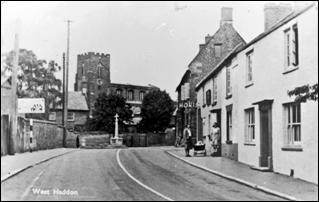
| 1086 | 12 |
| 1674 | 106 |
| 1720 | 134 |
| 1801 | 171 |
| 1851 | 234 |
| 1901 | 185 |
| 1961 | 251 |
| 2001 | c.480 |
| 2009 | c.600 |
People have been living in West Haddon for a thousand years. Through that time their story has been largely one of independence and empowerment. The survey which resulted in the Domesday Book in 1086 recorded a higher proportion of freemen in the tiny population of this village than any other in the area. In 1275, West Haddon market was so successful that Northampton complained of the competition. And in 1765 the enclosure of the old open fields was met with a riot and the burning of timber for the new fences.
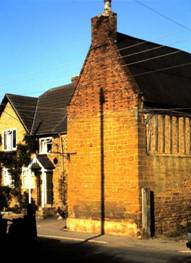
Because the village has never been dominated by a single, powerful landlord, the community has always been open to incomers with useful trades and businesses. There was a mix of agricultural holdings, from small holdings of just a couple of acres to farms of several hundred and this mix is reflected in the streetscape even today. Though a number of old cottages were demolished in the 20th century, there remains an interesting variety of old properties, many dating from the time of the English Civil War in the 17th century. Stone House, Guilsborough Road, is an even earlier home, built on the medieval hall and crosswing plan and still showing, along the side wall, the last surviving timber framing in the village.
From traditional 3-bay Northamptonshire farmhouses, through tradesmen’s dwellings to labourers’ cottages, some are built of stone, others of brick, whilst a rare few are fine examples of cob, reflecting not only the relative prosperity of the original owners but also the changing fashion in building materials as stone came to be seen as hopelessly old fashioned and brick became all the rage.
At one time all the houses in the village would have been thatched and an order relating to fire safety appeared in an Elizabethan court record for the village. But one hot August, in 1657, a fire took hold which left 6 village families homeless and destitute and a collection was authorised by the County Quarter Sessions around all the local parishes to help the victims back onto their feet.
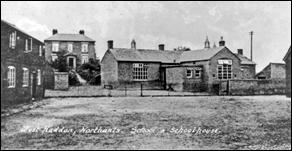
Up until the 1765 enclosure, the parish was farmed in strips on the open field system, which left its mark on the landscape in the form of ridge and furrow, still visible in places. This system required a considerable degree of cooperation between farmers. Farmhouses and smallholder cottages lined the streets of the village and hedges divided the whole parish into 3 big fields: Little, South and Debdale, the East and West Ryehills and the Heath. After 1765 new farmhouses began to be built out on the new hedged and fenced farms and some smallholders sold up to larger landowners. Some of the farmhouses were subdivided to provide accommodation for an increasing number of landless labourers. The sons of a doctor who had moved into the village in the 1730s became some of the biggest farmers in the parish and one of them, John Heygate, became the nearest thing the village had ever known to a squire, endowing the village with a school, while his heir, William Lovett, established the Almshouses.
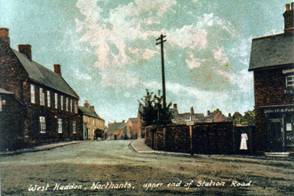
But agriculture was not the only game in town. The middle of the 18th century marked the peak of the rural textile industry in Northamptonshire. The Militia Lists of the 1770s included every male villager between the ages of 18 and 45 along with their occupation, so we know that roughly twice as many people were weaving and woolcombing than farming at that time. In addition, the commercial advantages of standing at what is effectively a crossroads of important routes – from Warwick to Northampton and Banbury to Market Harborough, were improved when the Northampton road became turnpiked, with a toll bar at the corner of High St and Station Rd.
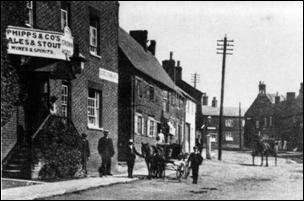
First William and then his widow, Mary Burbidge hosted travellers at the Red Lion until almost the end of the 18th century before John West bought her up and put the Red Lion out of business so that his own inn, the Crown, could take the lucrative carriage trade. (Current drinkers at the Crown might be surprised to know that a performance of Handel’s Messiah was staged there at around the same time that Admiral Nelson was fighting the Battle of Trafalgar).
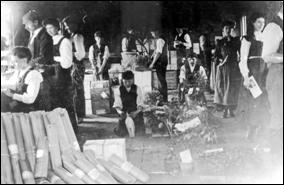
Among others drawn by the advantages offered by the passing trade, the clockmaking father and son, Valentine and John Hanbury moved here from Watford at the beginning of the 19th century. As the village population grew, Thomas Patch and John Johnson went into partnership at the Guilsborough Rd brickyard and began building cottages in the 1820s. Later in the century, the Townleys moved from blacksmithing into water engineering and George Townley’s patented hydraulic ram formed the basis for a business, employing a significant number of villager, in West End, whilst probably the earliest mail order business in the village was operating from the corner of Guilsborough and Northampton Roads (now the Jubilee Garden) at the Letts Nursery.
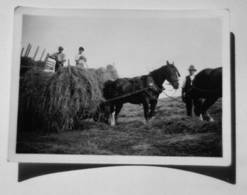
On the agricultural front, the prosperity of what became known as Victorian High farming left its legacy of fine brick built barns and field hovels before a run of bad harvests began the Great Agricultural depression of the 1870s. By 1900 the population was declining as labourers and their families left the village to look for work elsewhere and farms began to be sold for sporting estates as cheap imports of grain and beef from the Americas depressed prices. The First World War took a further toll, of both men and horses, so that by the Second World War, the country was unable to feed itself.
Then Digging for Victory was supplemented by the spread of tractors on farms, increasing local food production , and incidentally, by 1947, enabling farmer Arthur Vines to transport District Nurse Martha Muncaster through snowdrifts to deliver a baby.
The influence of the internal combustion engine was later to have a more profound effect on the development of West Haddon. Whilst before the war only a handful of villagers owned motor cars, by the 1960s motoring had become comparatively cheap and commuting from a country home to a job in town became a way of life for many. Developers met the growing demand for modern homes in a rural setting with estates like Atterbury Close, whilst council housing also offered modern amenities to those who were fed up with ‘quaint’, damp and draughty old cottages.
By the 1970s those quaint old properties were proving attractive to a new wave of incomers, inspired by dreams of self-sufficiency and episodes of the Good Life, to grow vegetables and keep chickens and cook in restored, stripped pine kitchens.
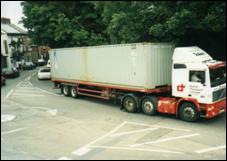
Then the wheel of fashion turned again, to power dressing and home offices and multiple car ownership, and car parking became an increasing problem around the village. Traffic calming was introduced to provide more parking and slow down through –traffic, particularly the heavy lorries, many of which operated out of the growing freight forwarding hub at Crick.
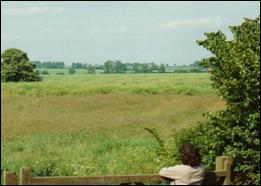
The growing importance of the motorway network made West Haddon an increasingly attractive place to live, particularly to those whose work involved extensive travelling. Developers built more new estates, on old farmland and disused allotments. The village school had to be enlarged. The playing fields were extended after a lot of fundraising and donations from many villagers.
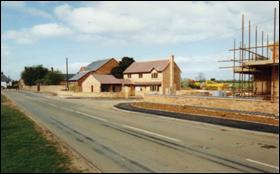
Now the new bypass, looping round a village which has doubled in size within a generation, would seem to have deprived the community of the passing trade which has sustained its enterprise for a thousand years. But we are now living in a virtual world. First, the internet, and now broadband connections offer the potential of a new kind of passing trade. It will be interesting to see what effect this has on the future history of West Haddon.
Wendy Raybould, December 2009.
